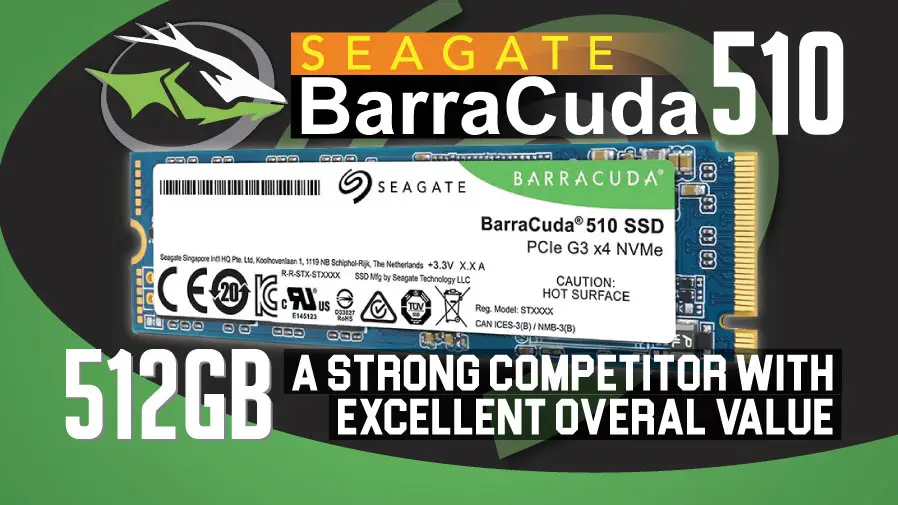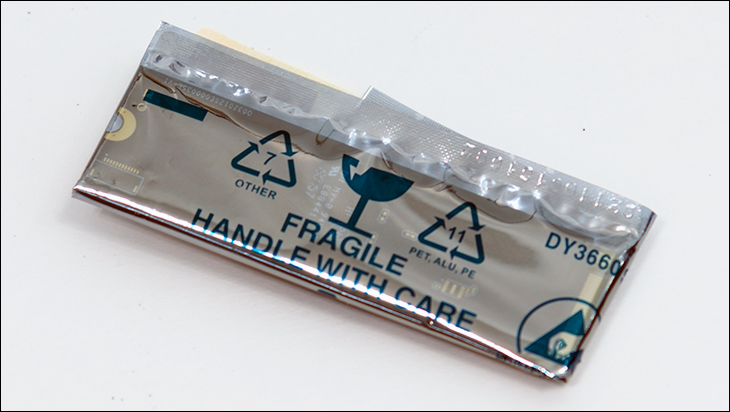
As with a lot of our review samples, the Seagate BarraCuda 510 512GB we obtained did not come clad in its retail packaging. As such we cannot comment on the shipping container or accessories that Seagate includes. With that said we have looked at a lot of Seagate options which have come in retail packaging. For the most part Seagate does know how to make a shipping container which is both aesthetically pleasing while also assuring your new purchase will arrive safe and sound. We truly doubt Seagate has done anything less for their new BarraCuda 510 series.
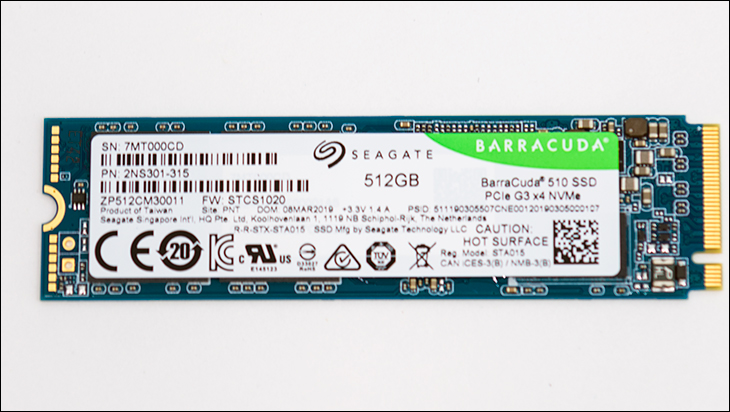
Let’s start with the ‘elephant in the room’ when comparing the Seagate BarraCuda 510 series to the Western Digital Black SN750 series. That of course is the layout of the components on their PCBs. Western Digital does make a big deal out of their unique layout and how it improves performance. This is technically true. They simply are presenting the data in the best light possible.
By placing the hotter running in-house NVMe controller in the center of the board and NAND ICs on each side the average latency of reaching all NAND cells is indeed lessened. The electrical signals simply have less distance to travel in ‘worst case’ scenario to reach the “furthest” IC compared to a typical layout (where one or more of the NAND ICs are indeed further away from the controller than the other).
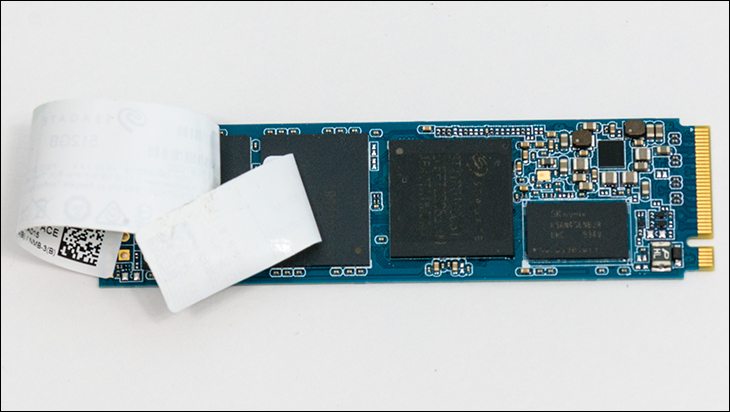
There is no denying this. That is just how things work. The reality is a bit more nuanced. So nuanced it did take us even a bit to wrap our heads around how much this difference actually means… and it is a rounding error in the difference. To explain, does require some math.
Both series are single sided M.2 22mm wide by 80mm long storage devices (AKA M.2 2280). This means the absolute largest distance the electrical signals have to travel is 80mm (it is a lot less than). If we include the return trip this is 160mm of distance traveled for absolute, not even remotely close to reality, ‘worst case scenario’. The speed of light in nanoseconds is 300cm/s. So the absolute, worst case scenario for signal travel time is just a touch over half a nano-second (0.53ns).
The absolute lowest latency, non-volatile solid state storage available today is rated in in microseconds (Intel Optane). Usually in low double digits. Typically, NAND is can hit as low as the 60microsecond range but is typically much higher that this (if you need perspective for how fast this is… 1ms is about how fast the neurons in your brain fire). A thousand microseconds makes up one nano-second. So the WD SN750 unique layout results in at best a reduction of 0.00053 microseconds… or four decimal places of accuracy to even see it.
This is the difference between technically correct, and actually caring about it in the real-world. Instead of wasting resources and re-arranging the NAND and controller layout, Seagate did look at what actually matters. This is why the entire Seagate BarraCuda 510 series, right now, is only populated on the top side of the PCB.
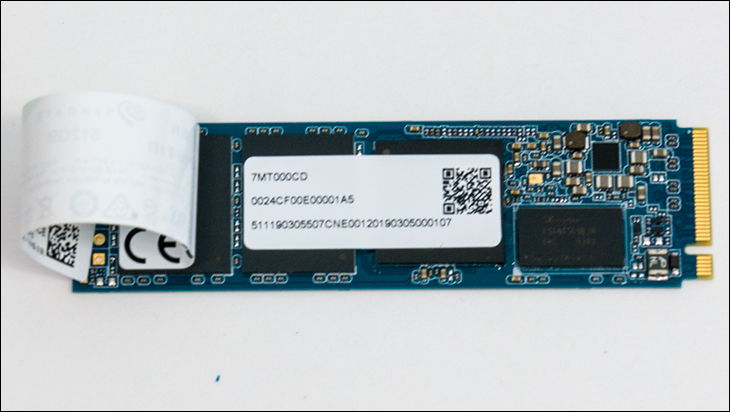
This part of the layout does matter. Not technically correct, but real-world performance impact correct. Even BiCS 3 TLC NAND is relatively fragile compared to SLC. Even SLC NAND will thermally limit once the controller’s onboard sensors register 60-degree Celsius temperatures (on average some controllers will start throttling in mid 50 range, others much higher). This is because NAND that is hot is more prone to fractures in its crystal matrix occurring during the write process. To keep this from happening algorithms are included in every modern controller that basically state “the hotter the temperature of the NAND cell the slower it has to be written to”. At even higher temperatures the controller itself will enter a lower operating state to help reduce temperatures – further reducing overall performance. These algorithms are rather aggressive, as they should be, and are triggered based on the highest temperature sensor reading, not the lowest. These low-level protective measures do indeed allow TLC NAND to be longer-lived but it is why ‘naked’ (or non-heatsink clad) M.2 NVMe drives performance can indeed be variable in the real-world if they are not properly cooled.
On too many motherboards the M.2 slot is only passively cooled. Since it is relying solely on internal case air movement the differences in temperatures from one side of the M.2 drive versus the other can greatly vary. Worse still, even those that do come with heat spreaders (e.g. the M.2 port is located underneath the PCH or SouthBridge ‘heat sink’) only the top side of the M.2 drive will be able to take advantage of this increase in cooling. Since the controller will use the highest temperature sensor reading when deciding on if to artificially reduce performance having components on the back of the M.2 drive can indeed impact real-world performance. This is why the Seagate BarraCuda 510’s layout, like all single sided NVMe M.2 drives, is indeed important. You should take this into consideration when purchasing any NVME M.2 drive.
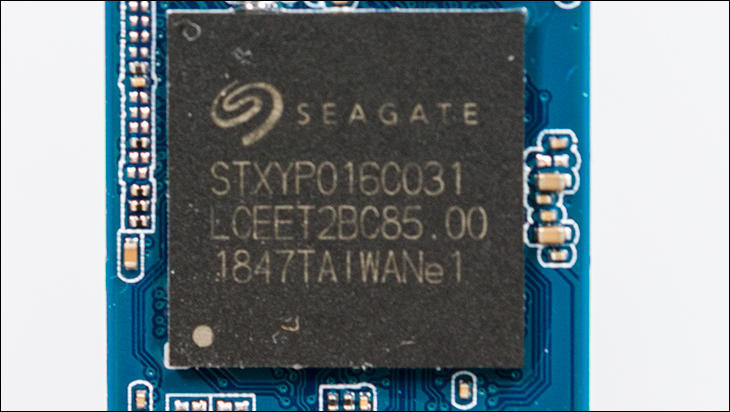
Even though the controller is indeed branded as ‘Seagate STXYP016C031’ underneath this Seagate branding is a Phison E12 running custom firmware. In classic Phison style, the E12 was previewed in later 2018, but did not start appearing until early 2019. As Phison is doing the same thing with the soon to be released the PCIe 4.0 four lane based E16 controller, the E12 is still arguably Phison’s flagship controller. A controller that is rather potent as it is an eight channel, multi-core design built on TSMC’s 28nm manufacture fab process. Unlike the older E7 it replaced in Phison’s line-up, the E12 is a NVMe 1.3 (and not just NVMe 1.1b) based model that has enough processing power to fully harnesses all the baked-in upgrades to the latest NVMe standard has to offer.
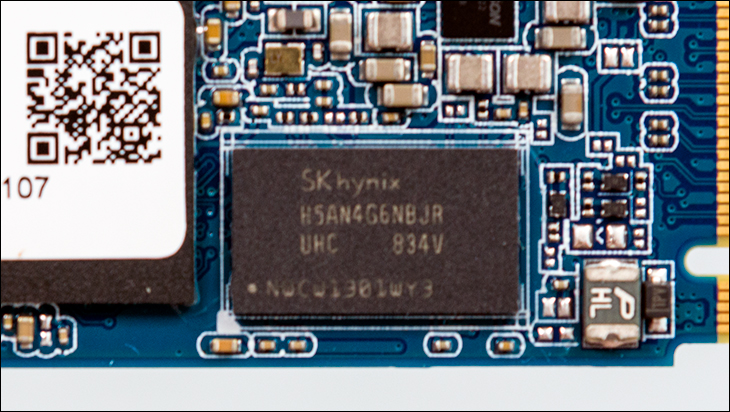
Mix in upgraded support for faster DDR4 RAM (instead of just DDR3), and better LDPC w/ Phison’s proprietary ‘StrongECC’ error correction and the end result is the data stored on the attached NAND is now not only faster to access but much more likely to stay readable longer than ever before. Since it is DDR4 compatible it should come as no surprise that Seagate has opted for a reasonable 512MB worth of SKhynix DDR4-2400 RAM cache. Though if higher capacity BarraCuda 510 models are released, we expect this amount to double on those larger capacity versions. The E12 may not be a cache hog, but at deeper queue depths more cache does result in (slightly) more performance, but 512MB (or 1MB per GB of NAND) is more than adequate for this capacity version.
Paired to this controller and RAM cache combination is two Toshiba 64-layer TLC BiCS3 NAND. Since this TLC NAND is 32GB (256Gb) per die, this means each of the NAND ICs is stacked 8 dies high. This is about as much as we would want to see as once you go over 8 die pack NAND ICs temperatures do become more difficult to regulate – even when actively cooled – as that is 512 layers worth of NAND, and 8 levels worth of low level internal control pathways/circuitry/etc. stacked on top of one another.
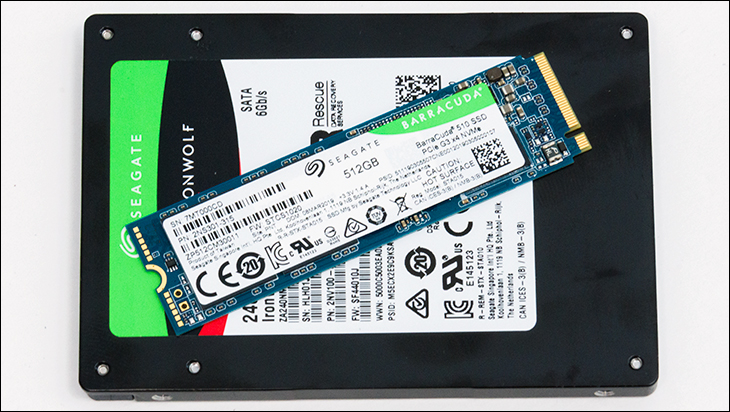
For those interested/worried about such things, the ‘S2’ rating at the end of the official 2280-S2 specification means this M.2 drive is only 1.35mm thick in the z-axis (or 1.35mm ‘tall’), and is single sided (a D1-D3 at the end would mean double sided – and is an easy way to tell single sided devices from double sided without having to physically look at a model). Almost all motherboards with active or even passive cooling features (e.g. heat spreaders, heat sinks, etc.) can easily accommodate this S2 specification. Most, possibly all, of these motherboards are designed around offering S1 (1.2mm) to S3 (1.5mm) compatibility via the inclusion of a ‘squishy’ heat pad. Most, though certainly not all, can easily handle the 2.38mm z-axis height of the WD SN750. However, this noticeable difference in height may become an issue with certain portable systems, and may be another point in the BarraCuda 510’s favor. We would recommend checking your portably devices specifications before worrying about it.
For those concerned, as most actually should be, about the default level of over-provisioning of zero GB, this can easily be modified via SeaTools. For enthusiasts who stress their drive on a continuous basis, or those wanting to extend the lifespan of the drive well beyond the 5-year mark, we recommend turning all 512GB SSDs into 500GB. For those who really, really stress them 480GB is also not a bad idea. There is no such thing as overkill when it comes to over-provisioning… only an ‘unnecessary’ amount of capacity reduction. For testing we have left it at its default levels.
